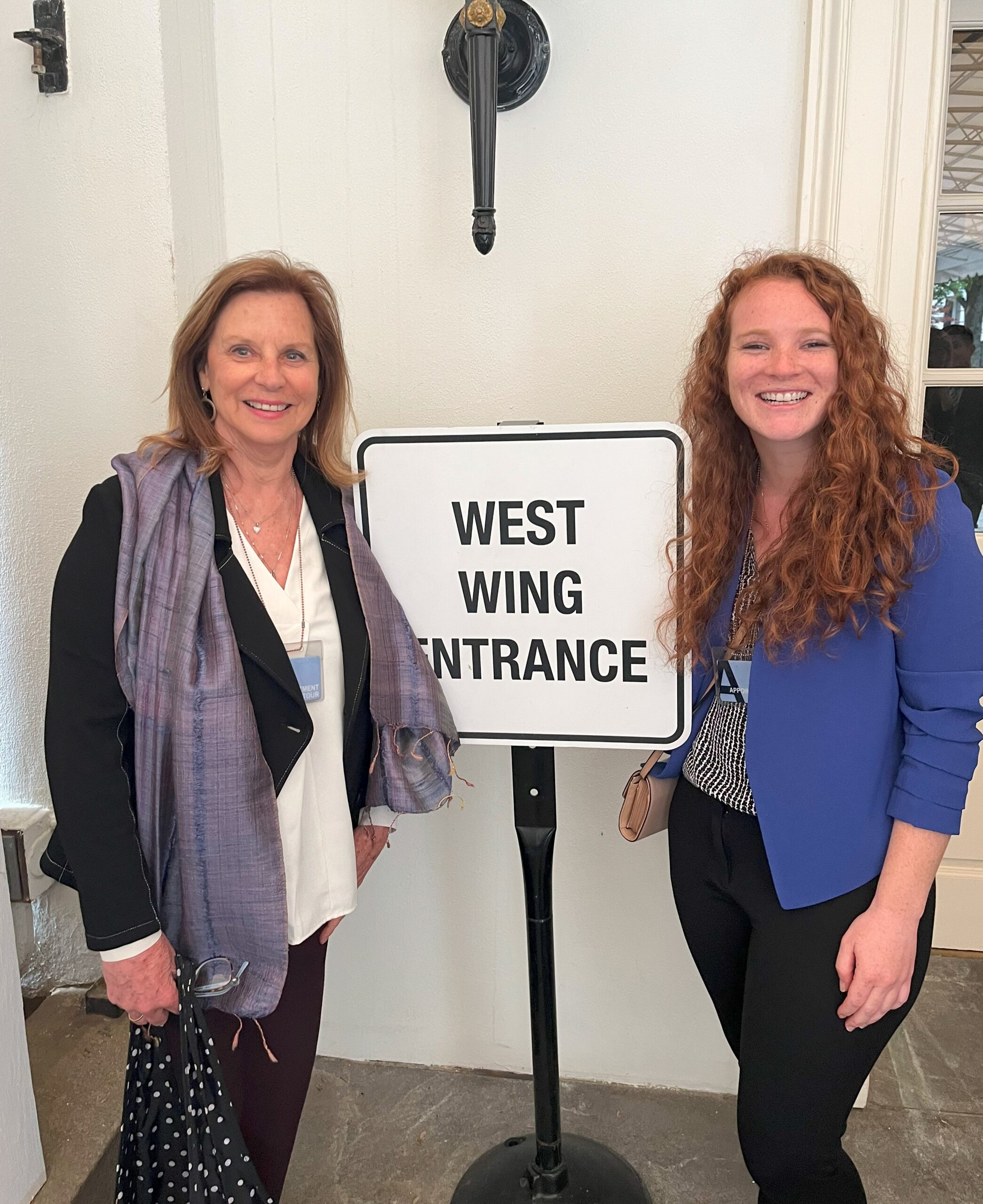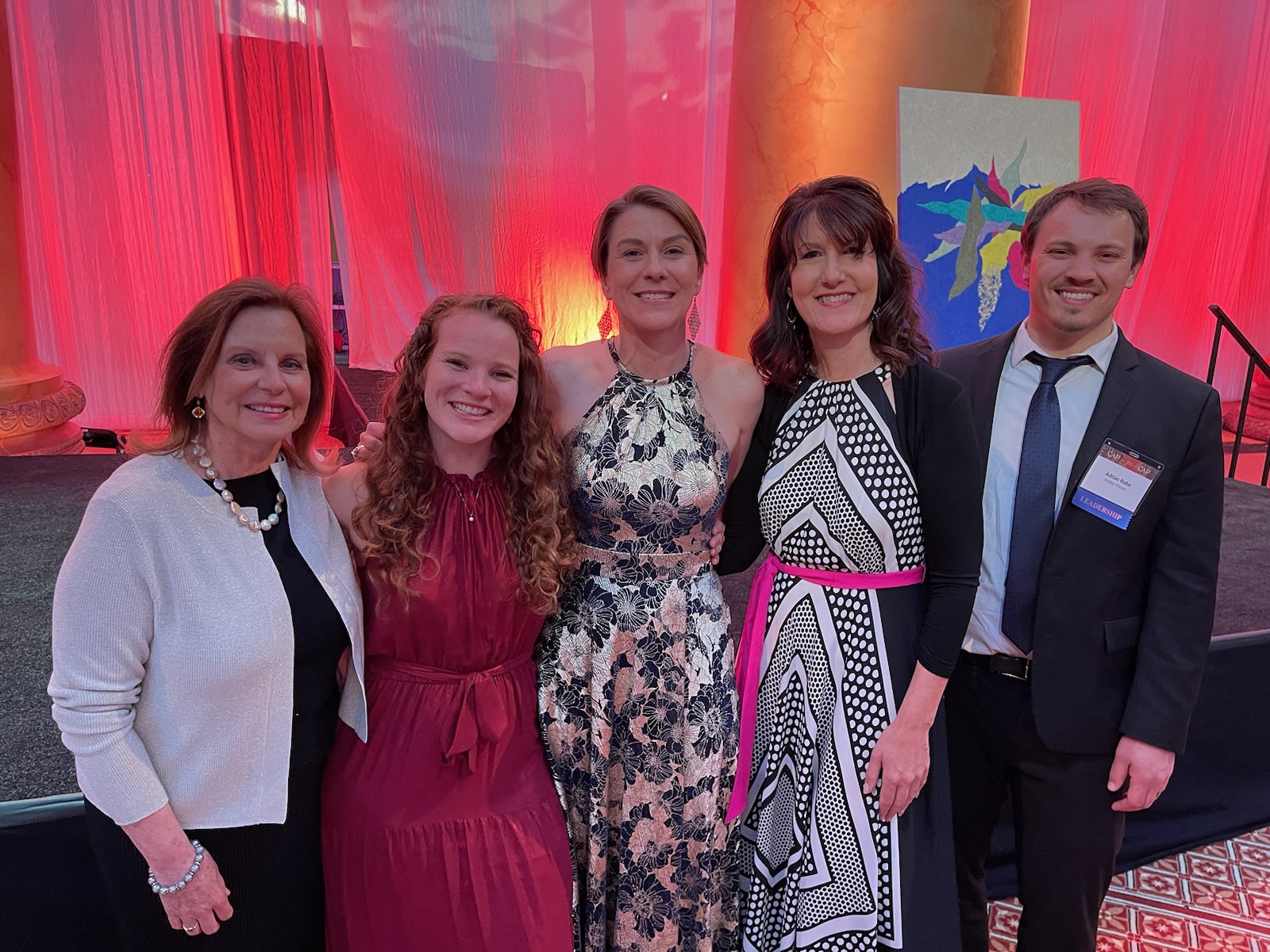A Federal Advocacy Agenda
Right now is a critical time to be engaged with the Federal government. There are once-in-a-generation resources available for the “big play” investments that our region needs to grow and thrive. Valley Vision has a long history of participating in our region’s annual Cap-to-Cap trip hosted by the Sacramento Metro Chamber.
This year we had leadership, or Co-Chair roles, on four teams (Air Quality, Economic Development, Food & Ag, and Workforce), and Trish Kelly, our Managing Director, served as Honorary Chair of the trip in recognition of her role in the region as a policy expert as well as her many years of Cap-to-Cap leadership. Our five Valley Vision staff who attended advanced our region’s sophisticated advocacy agendas; read about their experiences below.
Adrian Rehn
Each year, the Sacramento Metro Chamber puts together an excellent and well-regarded “Capitol-to-Capitol” Federal advocacy program – the biggest of any Chamber-led effort in the country. Attending the program is an enormous honor and privilege, with 407 participants this year, including 100+ freshmen and 100+ elected officials, and a whole lot of others with important leadership roles in our region. This year was no exception – the Chamber absolutely nailed the look and feel of the 2023 program.
The meat of the program is fast-paced advocacy meetings with our legislative delegation as well as committee and agency staff. The Cleaner Air Partnership, which Valley Vision staffs, leads one of twelve policy-focused “teams” dedicated to air quality. This year, our team elevated specific investments in Future Mobility projects like the ZEV Deployment Strategy and CA Mobility Center, and technical but extremely important policy fixes like letting air districts “write off” smoke from preventative prescribed fire instead of getting dinged by U.S. EPA. We are following up this week and next on these important “Asks” and look forward to continued engagement throughout the year as we continue to work toward cleaner air for all.

Grace Kaufman & Trish Kelly
Each year, Valley Vision’s participation in the Capitol to Capitol provides us an opportunity to advocate for the needs of the Sacramento Region on a national level. This year, the Food and Agriculture team was particularly impactful in highlighting the importance of the food system and the agricultural industry to the region’s economy and overall well-being. The team focused on the importance of supporting local food farms. ranches, food producers, nonprofits, food banks, restaurants, local governments, schools, hospitals, and businesses across the supply chain to ensure access to healthy, locally-sourced food for all. We advocated for improvements in the 2023 Farm Bill that would ensure access to critical programs that address food insecurity – a major challenge in our region – such as CalFresh. The discussions with our congressional delegation and agencies such as USDA and EDA provided the opportunity to highlight several of the region’s food and ag projects, focus on food as medicine, learn about new resources, and elevate our region as a place where all things food and ag are coming together through innovative and collaborative partnerships.
Over the course of five days, the program was an invaluable opportunity to engage with policymakers and advocate for programs that would benefit the region’s agricultural industry and ensure that everyone has access to healthy, nutritious, and local food. Meeting with congressional and administration leaders who are advancing the National Strategy on Hunger Nutrition and Health led to commitments to continue working together this coming year.
To read more about food and ag in the Sacramento region, check out our website at wearefarmtofork.org.

Trish and I also had the opportunity to tour the West Wing of the White House. It was my first time visiting Washington DC and seeing the historic building that has housed the world’s most powerful leaders was truly awe-inspiring.
During the tour, we were shown the various rooms and corridors of the West Wing, including the Oval Office, the Cabinet Room, and the Situation Room (and in case you’re wondering-yes, the vacuum lines are perfect in the Oval Office). The press room, a room that offers a glimpse into the inner workings of the media and the way news is reported from the White House, was a huge highlight of the tour for me.
Renee John
Participating in the Sacramento Metro Chamber’s Cap to Cap program provides a well-orchestrated vehicle for regional leaders to advocate in unison on important policy issues. In the area of workforce development, major federal legislation is currently in the reauthorization process. This includes the Workforce Innovation and Opportunity Act, which provides the most significant federal investment in workforce education and training programs. Additionally, the National Apprenticeship Act, which has not been reauthorized since 1937, is being shaped and expanded. Participating in meetings with congressional leaders and committees that design these and other legislation brings an opportunity to express what works well, and what is in need of adjustment from the folks doing the work on the ground.
I have found the folks in Washington to be very interested in our efforts in California, in the region, and particularly appreciate specific examples of how the components of legislation either benefit or constrain local efforts. This year also provided an opportunity to shine a light on collaborative efforts in workforce and education unique to California and the Greater Sacramento area.

Evan Schmidt
Cap-to-Cap not only enables our region to connect with federal representatives and agencies, but it also creates a concentrated space to connect with each other. Through team meetings, receptions, mixers, and plenty of informal gatherings our region goes to Washington to get things done in the Sacramento region. Key on my mind during the trip was inclusive economic development. Through the Economic Development team, we advocated for our key priorities from the Prosperity Strategy, timely investments in broadband infrastructure, support to build out our innovative ecosystem of entrepreneurs, and a continued emphasis on international trade that connects our businesses to the global marketplace.
With Valley Vision leading the regional Community Economic Resilience Fund effort, we are well-positioned to hone in on the ways that federal partners can help us leverage this state investment to amplify the impact. Our region is also exploring the ways that new legislation might help support regional economic goals. One example is the CHIPS and Science Act – a recent federal investment in high-tech manufacturing designed to strengthen manufacturing, supply chains, and national security. We found our federal partners to be responsive to our goals and we found many opportunities and alignments with them and among each other as we work to support thriving, equitable, and sustainable communities here at home.
